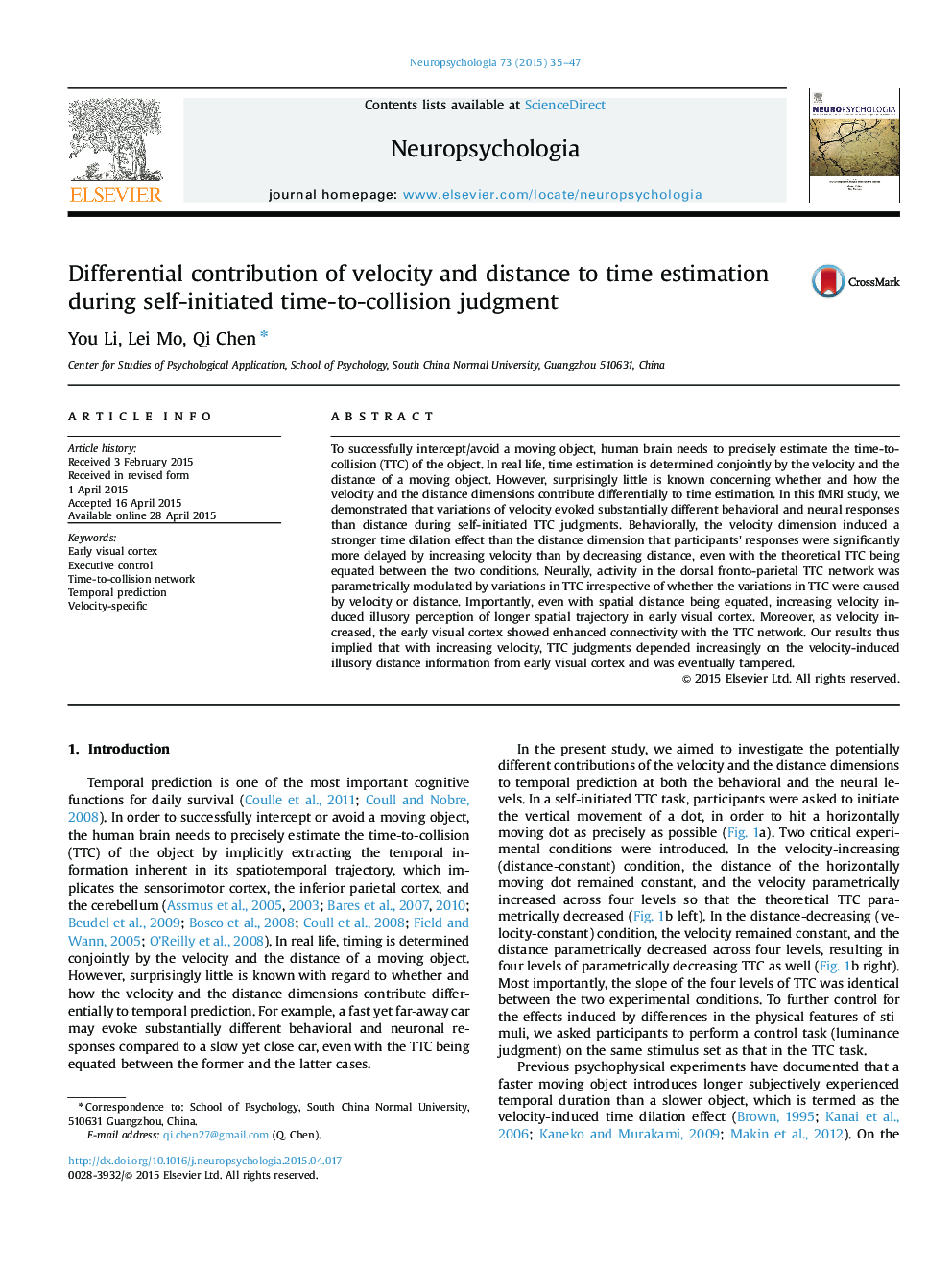| کد مقاله | کد نشریه | سال انتشار | مقاله انگلیسی | نسخه تمام متن |
|---|---|---|---|---|
| 944754 | 1475580 | 2015 | 13 صفحه PDF | دانلود رایگان |
• Velocity imposes stronger impact on time-to-collision (TTC) judgment than distance.
• Fronto-parietal TTC network was equivalently modulated by velocity and distance.
• Early visual cortex increased activity specifically with increasing velocity.
• Connectivity between visual cortex and TTC network enhanced as velocity increased.
To successfully intercept/avoid a moving object, human brain needs to precisely estimate the time-to-collision (TTC) of the object. In real life, time estimation is determined conjointly by the velocity and the distance of a moving object. However, surprisingly little is known concerning whether and how the velocity and the distance dimensions contribute differentially to time estimation. In this fMRI study, we demonstrated that variations of velocity evoked substantially different behavioral and neural responses than distance during self-initiated TTC judgments. Behaviorally, the velocity dimension induced a stronger time dilation effect than the distance dimension that participants' responses were significantly more delayed by increasing velocity than by decreasing distance, even with the theoretical TTC being equated between the two conditions. Neurally, activity in the dorsal fronto-parietal TTC network was parametrically modulated by variations in TTC irrespective of whether the variations in TTC were caused by velocity or distance. Importantly, even with spatial distance being equated, increasing velocity induced illusory perception of longer spatial trajectory in early visual cortex. Moreover, as velocity increased, the early visual cortex showed enhanced connectivity with the TTC network. Our results thus implied that with increasing velocity, TTC judgments depended increasingly on the velocity-induced illusory distance information from early visual cortex and was eventually tampered.
Journal: Neuropsychologia - Volume 73, July 2015, Pages 35–47
